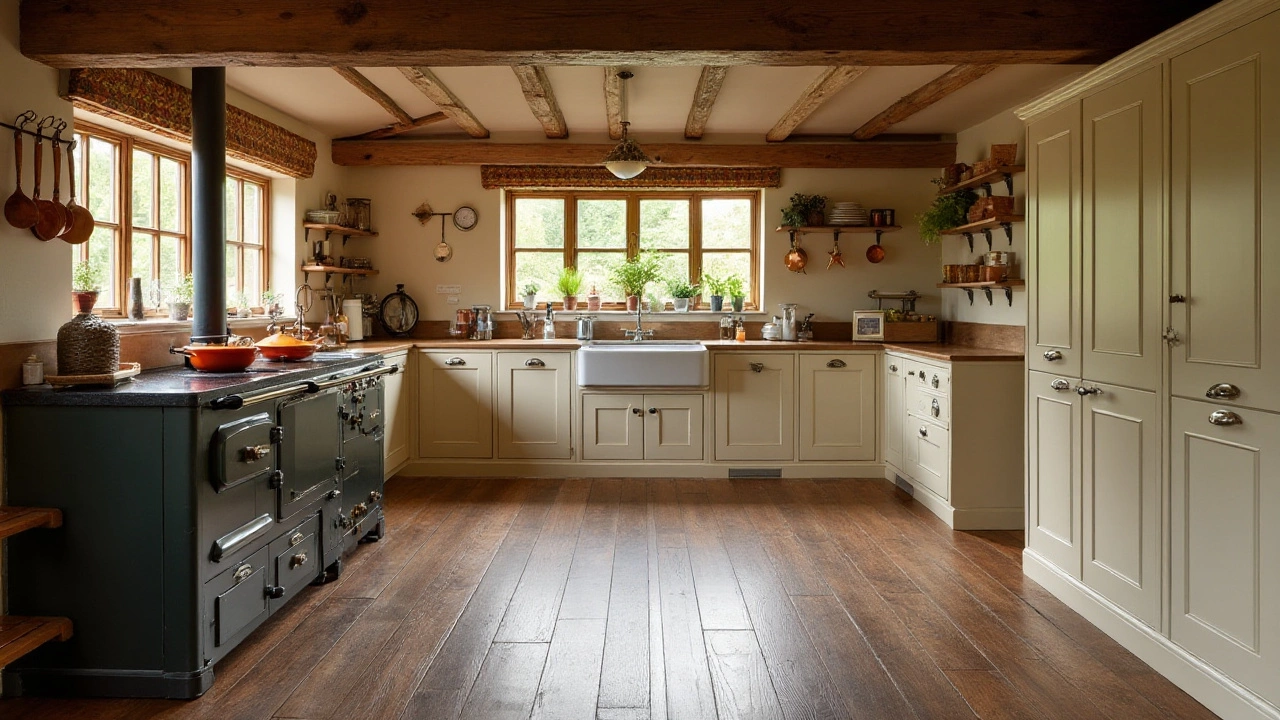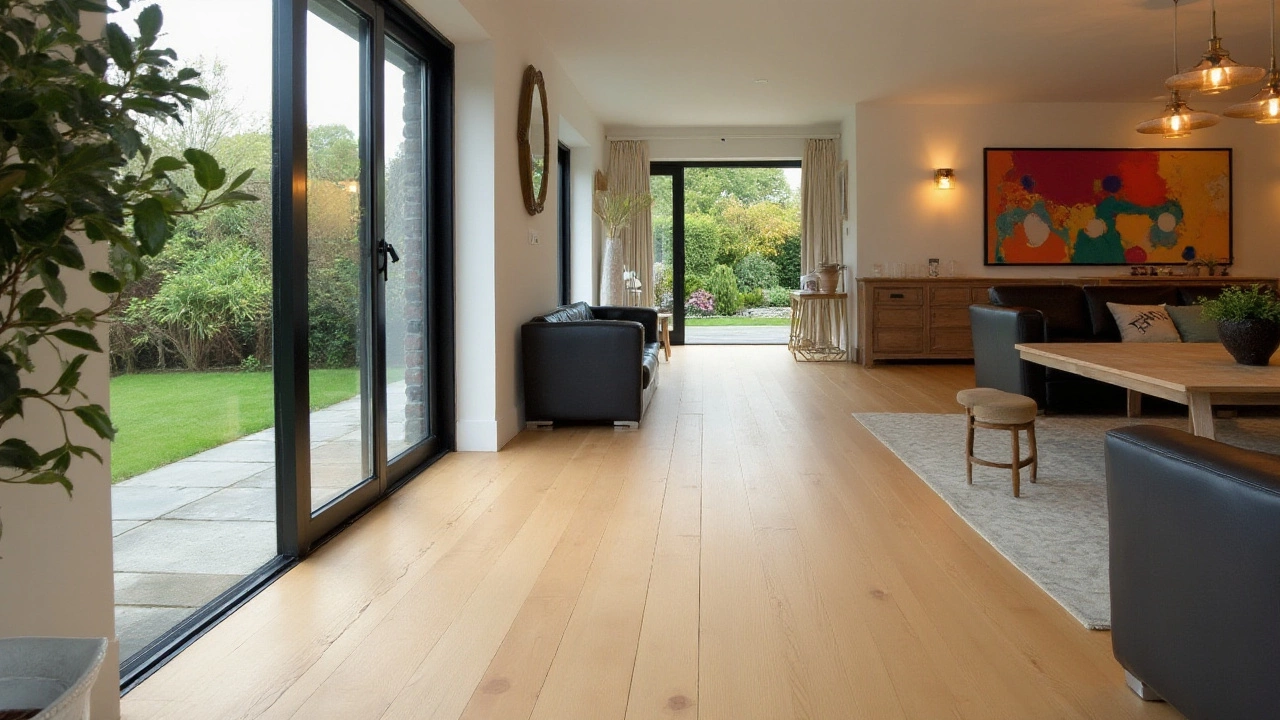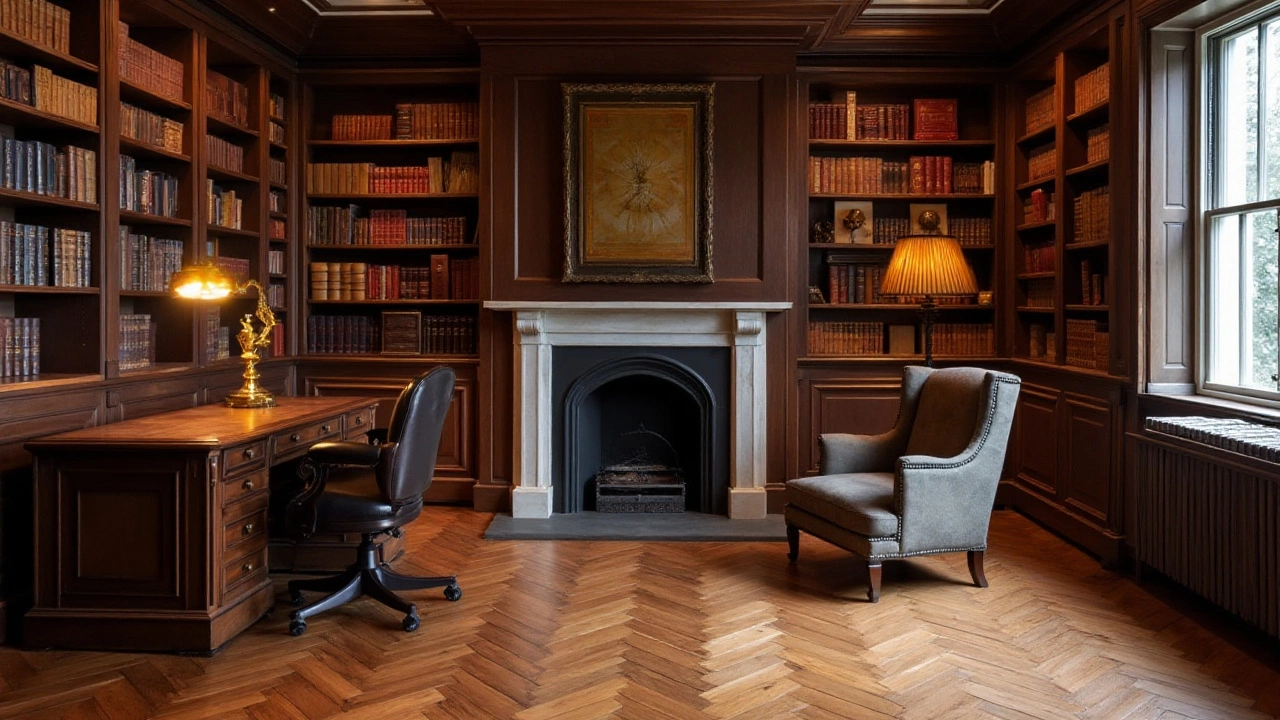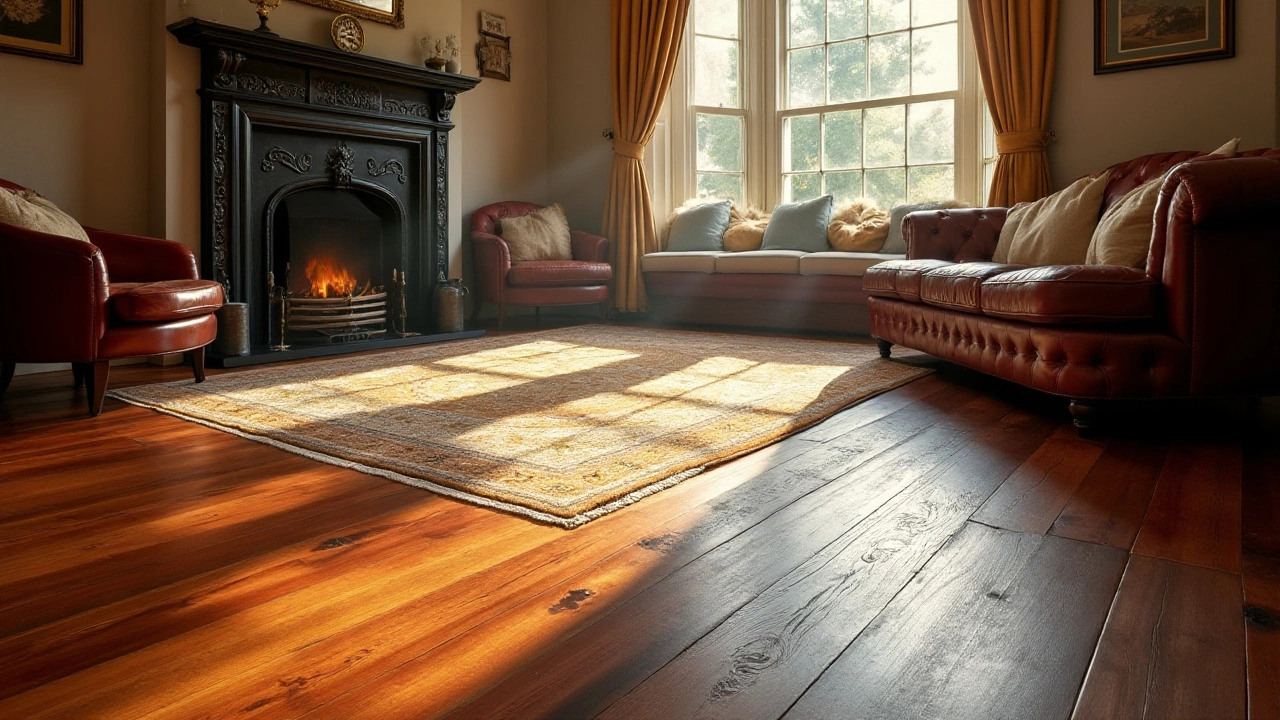When it comes to interior design, wood flooring isn't just about functionality. It's a stylistic choice that can define the entire atmosphere of a room. Certain wood tones have stood the test of time, endlessly appealing to both modernists and traditionalists. Why do these colors never lose their charm? The answer lies in their ability to blend effortlessly into any decor and season, giving your space a warm, inviting feel.
In this exploration of wood flooring, we'll delve into hues such as classic oak and rich walnut that consistently top the charts. Beyond aesthetics, we'll consider how these colors interact with light and space, helping you achieve harmony between your floors and your surroundings. Whether you're renovating or designing from scratch, a timeless wood floor color could be the simplest yet most transformative choice you make. Let's embark on this journey to discover which wood flooring color might just be perfect for you.
- Classic Colors for Timeless Style
- Understanding Color Psychology
- Balancing Lighting and Space
- Tips for Choosing the Right Shade
Classic Colors for Timeless Style
When it comes to wood flooring, certain hues have become synonymous with enduring elegance and adaptability. Among these, the rich and familiar warmth of oak is often hailed as the quintessential choice for creating a timeless interior. Its strength and ability to fit seamlessly into varied decor styles has long made it a favorite among homeowners and designers alike. But what makes oak's color so timeless? It's the versatile spectrum from pale white oak to deep red oak that offers options for both bright spaces and those aiming for a cozy ambience. This adaptability ensures oak remains a staple in flooring.
Another stalwart in the timeless wood flooring arena is walnut. Known for its deep, luxurious tones, walnut offers a different kind of charm. Its natural dark sheen adds a layer of sophistication and luxury that few other woods can replicate. Wood flooring made from walnut provides a perfect backdrop for both contemporary and vintage settings, making it a choice that never goes out of style. Many historians and designers acknowledge that walnut was the wood of choice in grand European manors of the 18th century, a testament to its long-standing appeal. And even today, it’s not uncommon to see walnut featured prominently in homes that make the architectural digest cut.
Maple, on the other hand, offers a light, airy appeal that suits a modern aesthetic while exuding warmth and comfort. Its closely-grained surface creates a smooth, almost continuous look that adds a contemporary flair to rooms. This subtlety allows maple to work as a neutral base, capable of highlighting bold furnishings without clashing, an important factor to consider in a dynamic, ever-evolving home environment. A lesser-known fact is that maple was often used in the construction of gymnasium floors, owing to its durability and attractive appearance, a quality that many still prioritize in home settings.
According to interior designer Sarah Richardson, who once featured prominently in Architectural Digest, "The color of your wood floor is the one element in a room that truly grounds the space. Choose wisely and it will never go out of style."
If nothing else, her comment underscores the enduring wisdom behind selecting classic colors, as they provide a solid foundation that supports any design evolution you may pursue. Debunking myths that following trends is key, she insists that when it comes to flooring, classic is indeed everlasting.For those who crave a touch of drama, mahogany might just be the answer. Known for its reddish-brown hues and impeccable grain, mahogany flooring brings an unparalleled level of richness and history into a room. Despite its opulence, it retains a versatility that means it can swing from traditional to modern with just a few complementary pieces.
For those keen on customization, a mix of stains can achieve the desired look while still harnessing the natural beauty of these classics. However, whether light or dark, the enduring appeal lies in their ability to harmonize with elements like interior design and home decor. A testament to the charm of these classic colors is the frequency with which they appear in historical restorations and modern builds alike. Looking at these options showcases how nature’s pallet, when unobstructed by fleeting trends, remains a steadfast companion in home design.

Understanding Color Psychology
Color psychology plays a significant role in interior design, affecting everything from mood to perception of space. The colors we choose for our wood flooring can influence the ambiance of our home, subtly impacting our emotions and behaviors. Natural tones like wood are often chosen for their grounding effect. Their earthy quality connects us to nature, promoting feelings of stability and warmth. In spaces like living rooms and bedrooms, where relaxation is key, these colors anchor the room and create a calming environment.
Dark woods such as mahogany and walnut, renowned for their rich, luxurious appeal, add depth and sophistication to a room. When these darker hues are used in larger spaces with ample light, they exude an aura of elegance and are perceived as more formal. On the other hand, lighter shades like oak and ash evoke a sense of openness and airiness. They are particularly favored in smaller rooms, as lighter shades help to make spaces appear larger and more inviting. Choosing light hues can transform a cramped room into a cheerful and expansive one, balancing out the space's visual weight.
The Science Behind Wood Tones
Scientific studies suggest that the color of materials can have biological effects, altering heart rate and inducing stress levels. An interesting insight from a study by the University of Texas reveals that softer and more natural tones like beiges and light browns used in wood flooring can lower blood pressure and slow the heart rate, fostering a tranquil setting ideal for unwinding. In contrast, spaces dominated by darker colors may offer a cozy, protective sense but can also unintentionally make a space feel closed or heavy if not paired appropriately with other design elements.
"Color has a powerful influence on our perception of space and mood," says renowned interior designer Kelly Wearstler. "Choosing the right shades for your home is not only about aesthetic appeal, but about creating a space that nourishes the soul."
Ultimately, the psychology of color is a tool—one that can be wielded to craft surroundings that are not just visually pleasing, but also emotionally appeasing. When selecting your wood flooring, consider how the desired floor color aligns with your lifestyle and the atmosphere you wish to cultivate in your home. Remember, the ideal wood tone is one that complements your personality and enhances the joy and comfort of your living space. Therefore, take your time to explore different wood shades and how they resonate with you before making a decision.

Balancing Lighting and Space
Choosing the perfect wood flooring color for your home involves more than just picking a shade that appeals to your eye. One of the most crucial aspects to consider is how natural and artificial light interact with the color of your flooring. Lighting can dramatically alter the perception of a room's space and mood. In a room with abundant natural light, lighter wood tones can amplify the airy, expansive feeling of the space. Conversely, darker woods might absorb light, creating a cozy, intimate environment, but potentially making a room feel smaller if not appropriately balanced. In spaces with limited natural light, rich, deep tones can add warmth and depth but may also require more thoughtful lighting schemes to prevent the space from feeling cramped or too dim.
The direction of the light is just as important. For example, north-facing rooms in the northern hemisphere typically receive cooler light, which might make some wood tones look dull or washed out. This is where warmer wood tones like honey oak or golden maple can counteract that coolness, adding visual warmth. Contrarily, in a south-facing room with brighter light, balancing the abundant warmth with neutral or cooler wood tones can help maintain an even ambiance without overpowering brightness.
"Good lighting can transform any room. The right balance will highlight the beauty of your chosen wood flooring, making your space both functional and aesthetically pleasing." — Interior Lighting Expert, Sarah Robinson
Space also plays a role in deciding the ultimate color of your wood floors. Larger rooms can accommodate darker wood flooring without feeling overwhelming. However, smaller rooms paired with dark wood might start to feel confined. To combat this, incorporating mirrors or glossy finishes that bounce light around the room can alleviate the space reduction effect caused by dark tones. The balance between lighting and space creates harmony in your home environment, maximizing both comfort and style.

Tips for Choosing the Right Shade
Deciding on the perfect shade for your wood flooring isn't just about aesthetics; it's a balance between style, function, and the unique character of your home. First and foremost, consider the architectural style and the existing color palette of your rooms. Are you aiming for a rustic charm or a sleek modern vibe? Different colors of wood flooring can transform the mood of your space. Warm tones, such as hickory or cherry, create a cozy, inviting atmosphere and work particularly well in areas with abundant natural light. On the other hand, cool tones, like ash or gray-washed finishes, lend a contemporary edge that can open up small spaces and make them feel larger and airier.
Lighting is a critical factor in your decision-making process. Natural and artificial light sources can dramatically change how a color looks at different times of the day. It's beneficial to take samples of potential wood shades and place them around your home, observing how they behave under different lighting circumstances. This will provide a realistic preview and prevent any post-installation regret. A wise choice might include consulting professionals or using augmented reality apps that simulate how different timeless colors fit within your space. As Helena Branin, a renowned interior designer, notes,
"Choosing the right flooring color is akin to selecting the perfect frame for a painting - it enhances but never overshadows the complete picture of your home."
Additionally, consider how different floor colors will interact with your family's lifestyle and daily activities. For instance, very light or dark floors tend to show dust and footprints more readily, requiring meticulous maintenance to keep them looking pristine. Therefore, for busy households or those with pets, mid-tone hues might strike the perfect balance, offering a forgiving surface that camouflages minor dirt and wear beautifully. Prioritize durability and finish when choosing colored wood flooring. Ensure the materials are suitable for high traffic and can withstand occasional scratches without losing their lustrous appeal.
A practical approach involves aligning your flooring choice with the climate in your area. Humidity and temperature fluctuations can affect the wood's performance and appearance. Therefore, incorporating engineered wood with your chosen interior design might offer enhanced stability and protection against potential warping. Reflect on regional trends and preferences as well. While some colors might gain localized popularity, opting for classic shades such as oak or walnut ensures your flooring remains stylish for the long haul. To guide decision-making, consider gathering insights and first-hand experiences from peers who navigate similar environments.
